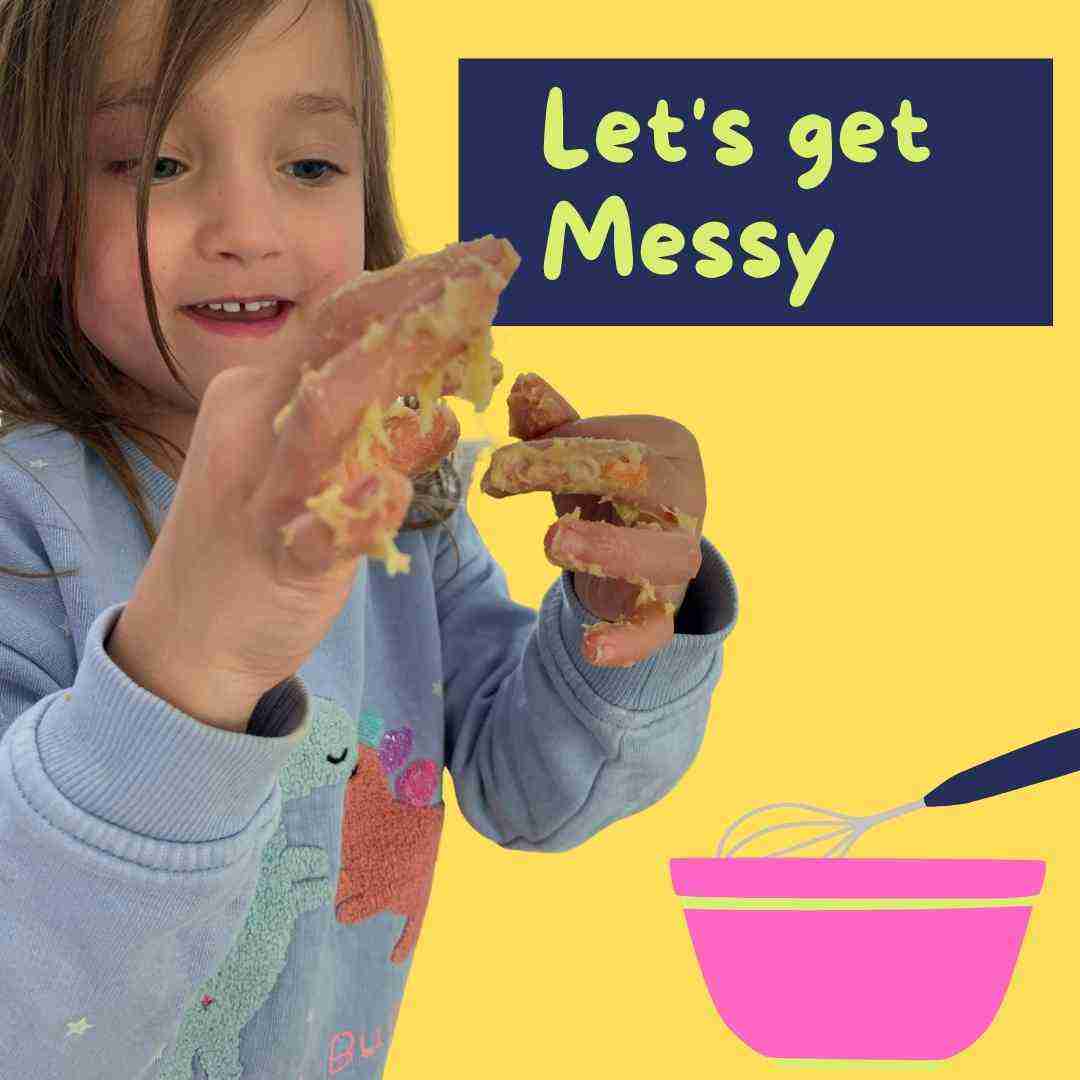Are mealtimes with your little one turning into a daily battleground? Are you desperately trying to find ways to convince your child to try even the tiniest bite of a new vegetable? If you find yourself nodding in agreement, you’re not alone. As parents, we’ve all faced the struggles of dealing with picky eaters who seem to have an unwavering loyalty to their preferred foods. The good news? There’s a solution that might just revolutionize your approach to mealtime battles: food chaining.
Imagine a world where introducing new foods isn’t met with tantrums and protests, but with curiosity and excitement. Picture your child willingly nibbling on a slice of cucumber or a crunchy carrot stick, not out of obligation, but because they genuinely want to explore new tastes. This is the world that food chaining can help you unlock.
But what exactly is food chaining? It’s not another fleeting parenting trend or a magic trick. It’s a strategic, thoughtful approach rooted in the understanding of your child’s unique tastes and preferences.
And who better to guide you through this journey than a paediatric dietitian who has not only advised countless parents but has also personally experienced the challenges of a picky eater at home?
In this blog, we’ll delve into the world of food chaining, exploring how it can transform your child’s eating habits and alleviate the frustration that often accompanies mealtime struggles. Drawing from both professional expertise and real-life experience, we’ll take you through the steps of implementing food chaining in your household. So, if you’re ready to embark on a journey that leads to a more peaceful and adventurous dining experience, keep reading.
What is Food Chaining Therapy?
Food chaining is a process used to slowly introduce new foods to your child by pairing the new food with a similar food your child already enjoys. The aim is to introduce similar new foods to their preferred foods. Food chaining involves taking your child’s preferred food and making small changes in size, shape, color, temperature, texture, and flavor. It is an effective way to gradually increase the variety of your picky eater’s diet, and as a result, improve diet quality. 1
What are the basics of food chaining?
When you hear the word “chain”, you likely think of a chain necklace or a large chain for a boat’s anchor. A chain is defined as a series of metal links of the same size attached to one another; the purpose of a chain often is to offer support.
Therefore, you can think of a “food chain”, as a tool to link your child’s preferred foods to foods similar in characteristics. Each exposure to a new food supports the next one.
Food chaining is going to look different for every child. It can be a slow process and falls within your child’s time frame. When you begin a food chain, the most your child may be comfortable with is smelling or touching/playing with the new food. Encourage these behaviors as they are a valuable step in trying new foods.
Through this process, you may find your child just doesn’t seem to like certain foods. That is okay. Keep in mind that we all have foods we like and dislike as well.
The Steps of Food Chaining
So how long does food chaining take? Here are the steps involved in the process:
Step 1: Write a list of the food they eat
The first step of food chaining is identifying your child’s favorite foods and the common characteristics of the food. What are the sizes, shapes, colors, temperatures, textures, and flavors of these foods?
Start by writing a list and group them in the following food groups:
- Proteins e.g. chicken, fish, beef, egg, lentils and pulses, nuts
- Carbohydrates e.g. pasta, bread, rice, cereal, potatoes
- Dairy e.g. milk, cheese, yoghurt or milk free alternatives e.g. oat, soya, coconut
- Vegetables e.g. peas, carrots, cucumbers, sweetcorn
- Fruits e.g. apple, satsumas, banana, tomatoes
- Fat e.g. oil, butter
- Other foods e.g. chocolate, biscuits, cakes, sweets
Step 2: Determine what foods they like and how they like them
Determine what new foods you want to work towards having your child eat. For each food, you will determine the starting point, the destination, and the steps along the way.
So, let’s start by looking at their preferences as this can help us to build the chain:
- What are their favourite flavours e.g. salty, sweet, spicy, bland
- What textures do they like? e.g. soft, hard, crunchy, chewy, smooth
- Do they prefer foods raw or cooked? e.g. raw vegetables vs cooked vegetables
- What about temperature? Hot, luke warm, room temperature or cold
- What cooking method do they prefer? e.g fried, grilled, roasted, steamed
- Do they like sauces with their favourite food or just plain?
Step 3. The Settings for Eating
The next step is to think about the setting for their food.
- Where do they like to eat? Do they eat better at home, at childcare or at school?
- What is the one location that they eat the best at? e.g. at the table, on your lap, sofa, floor, or in another room away from too much stimuli.
- Do they eat more with distractions? e.g. tablet, TV or music playing.
- Or do they prefer it to be quiet and then eat on their own?
Step 4: What food would you like them to eat?
The starting point would be your child’s preferred food and the destination would be the goal food. Try to pick foods that your child has tried in the past or is a regular family meal.
Step 5: Let’s design some food chains
It is important that each step is just a tiny leap to the next one. You want to avoid big jumps such as going from French fries or chips to mashed potatoes.
Continue to serve their preferred food alongside the new food to ease discomfort. Along the way, you can encourage your child to take bites of their preferred food in between bites of the new food- this is a way to bring a sense of comfort and safety to your child to fall back on as they stretch beyond their comfort zone.4
If your child is struggling to try the new food, you could also try pairing it with different sauces that they enjoy. This is a method called, “food masking”.
Food Chaining Examples
McDonald’s chicken nuggets to homemade chicken strips
- McDonald’s chicken nuggets (starting point/preferred food)
- Store-bought chicken nuggets
- Homemade chicken nuggets with breading
- Remove a small amount of the breading from the chicken
- Serve un-breaded chicken strips (destination/goal food)
You can use a similar method to take your child from eating breaded chicken to eating breaded pork, vegetables and so on.
Note: This is a single food chain to give you some ideas. You could do this with a few core foods in their diet. Food chaining doesn’t have to be linear; it can adapt and change with your child’s preferences.
Food chaining Ideas
Plain Pasta to pasta with sauce
Pasta and butter –> pasta butter and tiny sprinkle of cheese –> different shape pasta butter and cheese–>pasta with a tiny bit of shredded chicken or ham –>pasta with a tiny bit of sauce in a bowl. Play the dipping game –> pasta with a tiny bit of sauce.
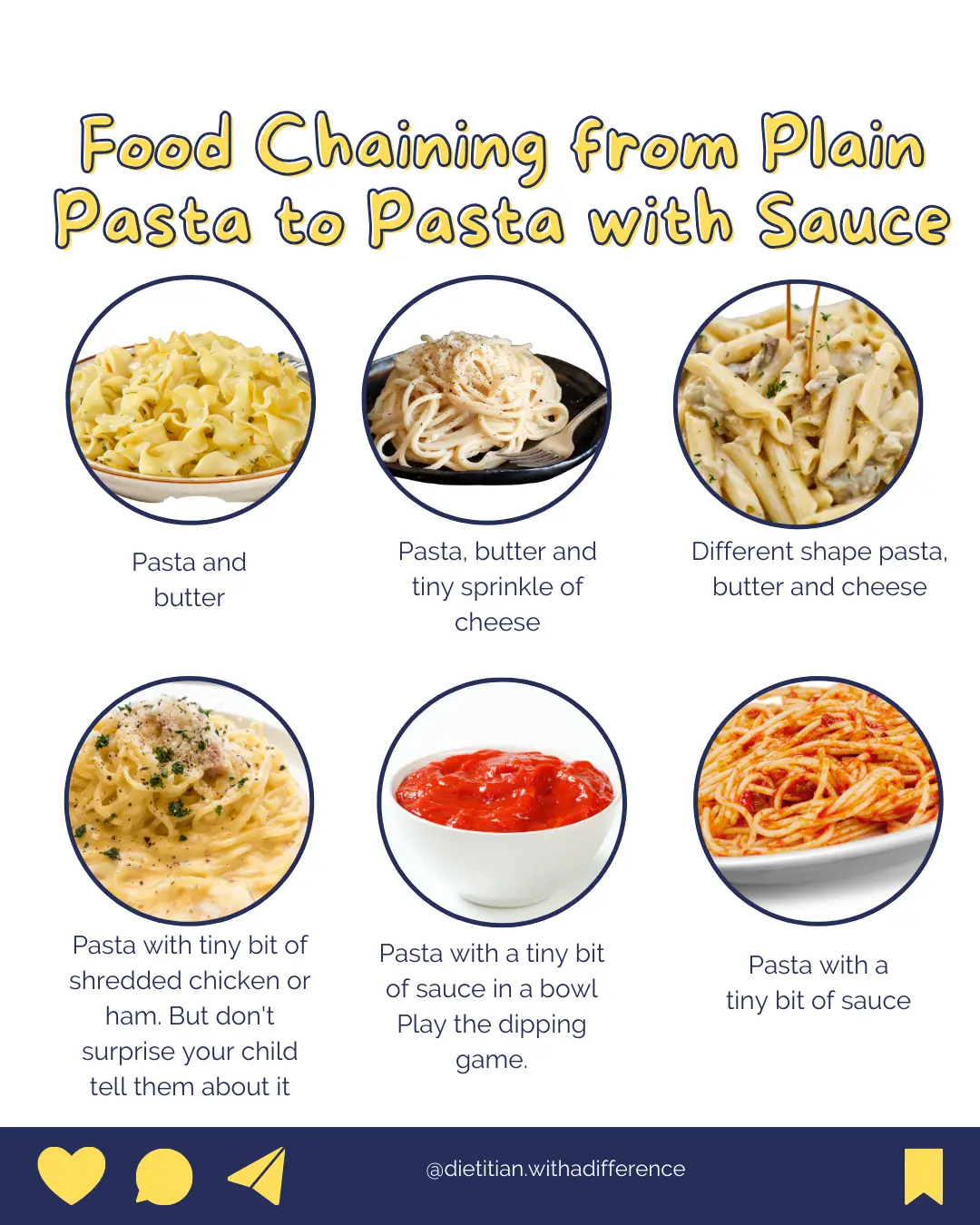
Orange Juice to Milk:
Orange juice –> Smoothies (orange juice, ice, sorbet) –> Smoothies gradually increase ice cream or sorbet and add some milk –> flavoured milkshake –> gradually reduce flavouring –> milk
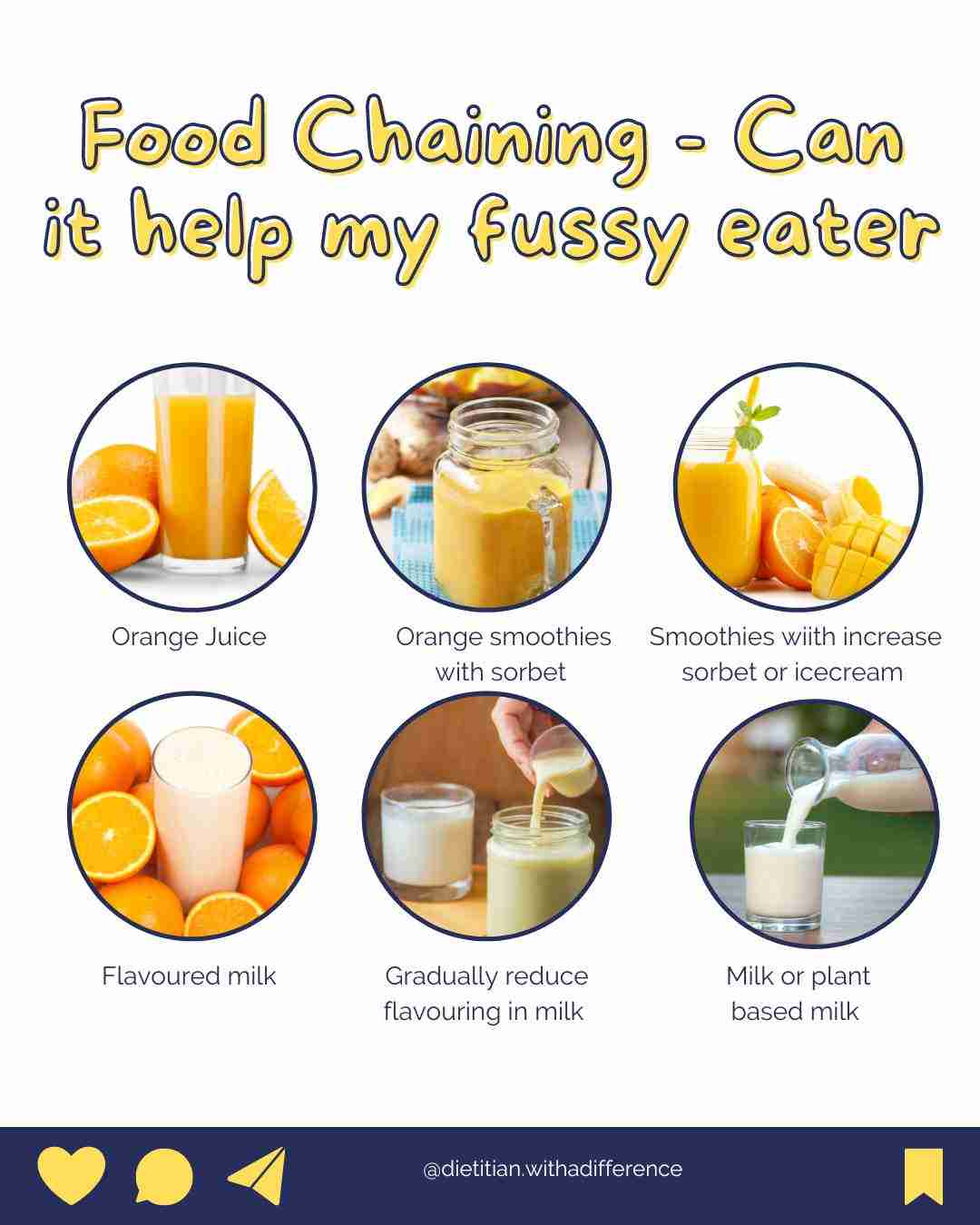
French fries to Baked sweet potatoes
Child’s preferred French fries -> homemade French fries (of similar size and shape cooked in an oven or air fryer -> homemade sweet potato fries -> cubed roasted sweet potato -> mashed sweet potato -> mash inside the skin of sweet potatoes -> bake sweet potatoes in skin, not mashed
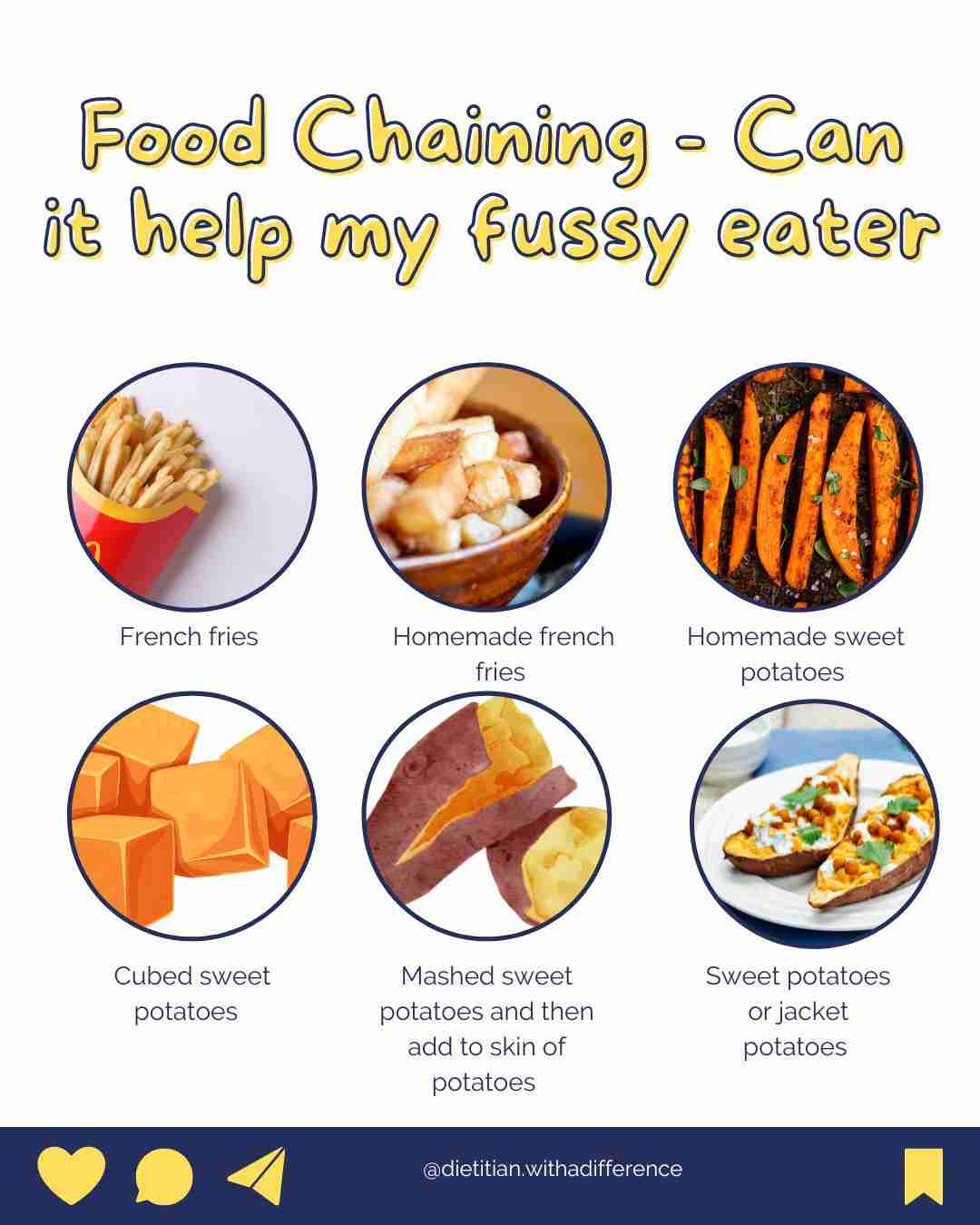
Crisps to Vegetables crisps:
Favourite potatoes crisps –> different crisp brands –> vegetables crisps (good way to introduce vegetables flavours) –> homemade roasted vegetables crisps –> roasted vegetables with honey –> roast vegetables with oil –> vegetables with cheese and butter –> vegetables with butter –> raw vegetables with some sauce e.g mayonnaise
Crisps to Cereal:
Crisps –> lower salt crisps –> puff crisps sweet version –> cornflakes with chocolate or frosties –> plain cornflakes –> different cereals. Try to pick a fortified cereal with iron.
In conclusion, food chaining can help your fussy eater over time and get them trying new foods. Don’t give up it can take time and you may need lots of little steps inbetween to reach your goal food.
If you like more help with food chaining –check out my food chaining masterclass.
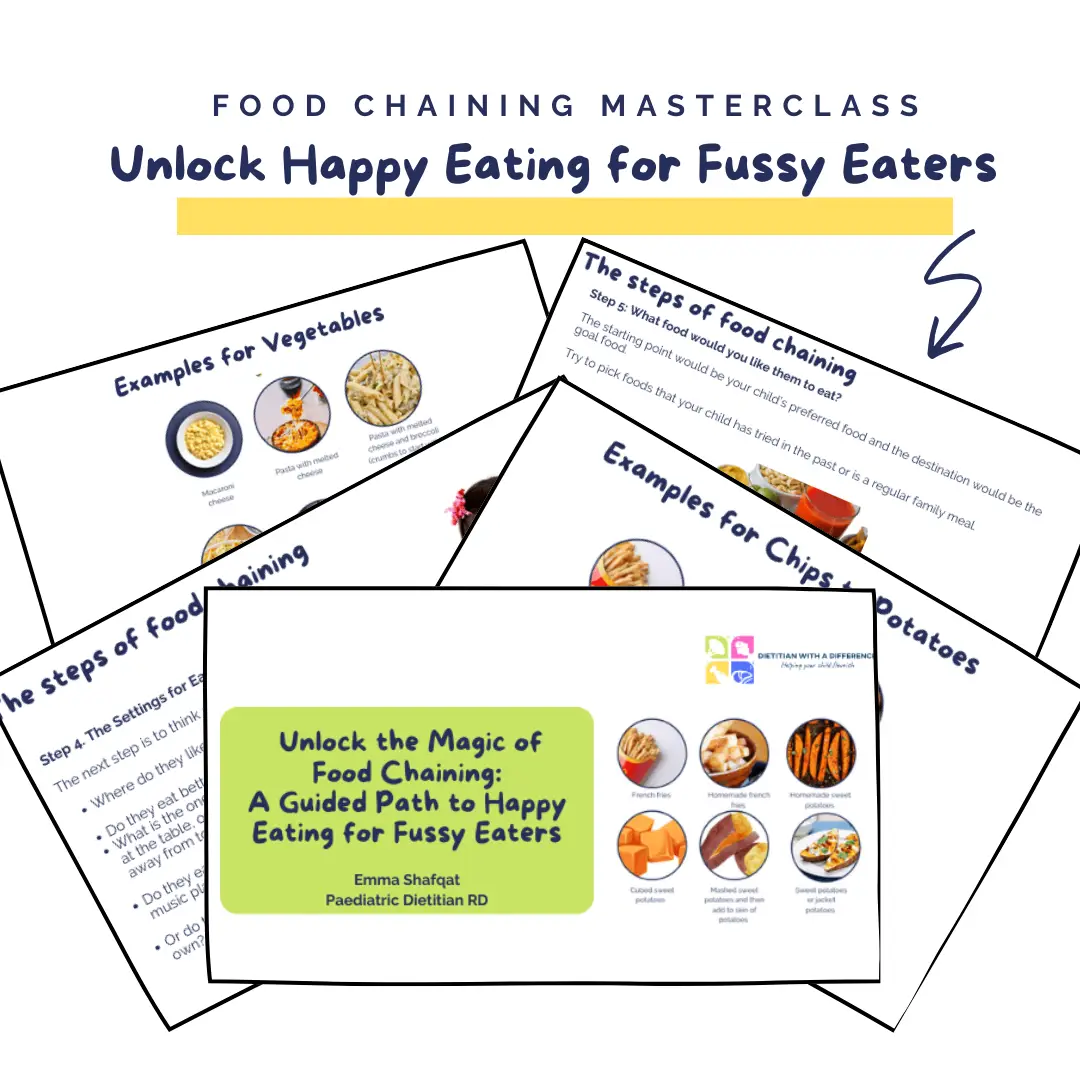
If you are struggling and would like more support I offer one to one consultations or check out my Creating Confident Eaters Programme.
Thank you to Paige Courtier, Student Dietitian for helping with researching and writing the blog



